DOG DAYS OF SUMMER
Keeping it cool and playing it safe.
DOG WALKING
A piece of tranquility or an anxiety filled chore?
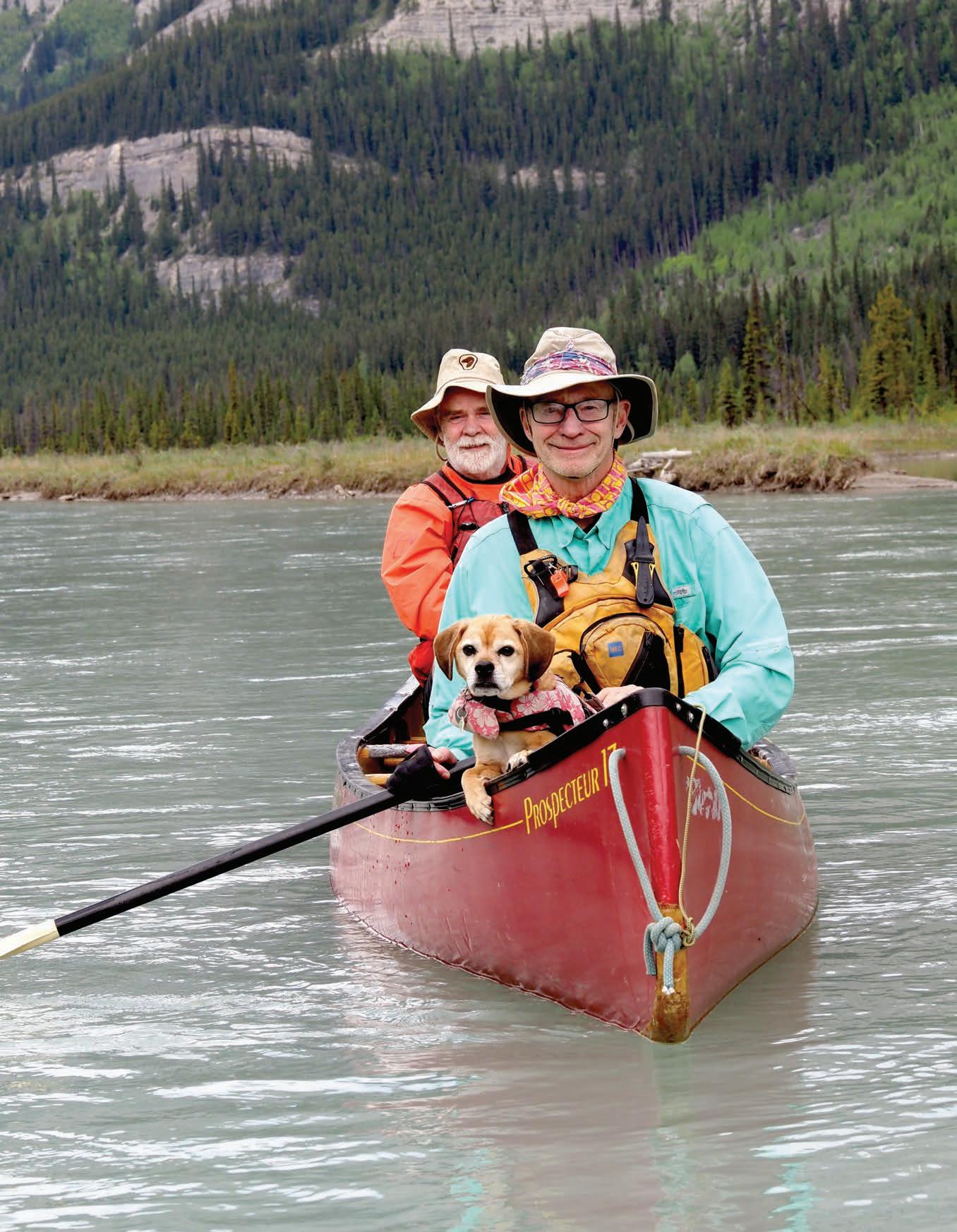
Why you should include obtaining a CGN to your training plan?
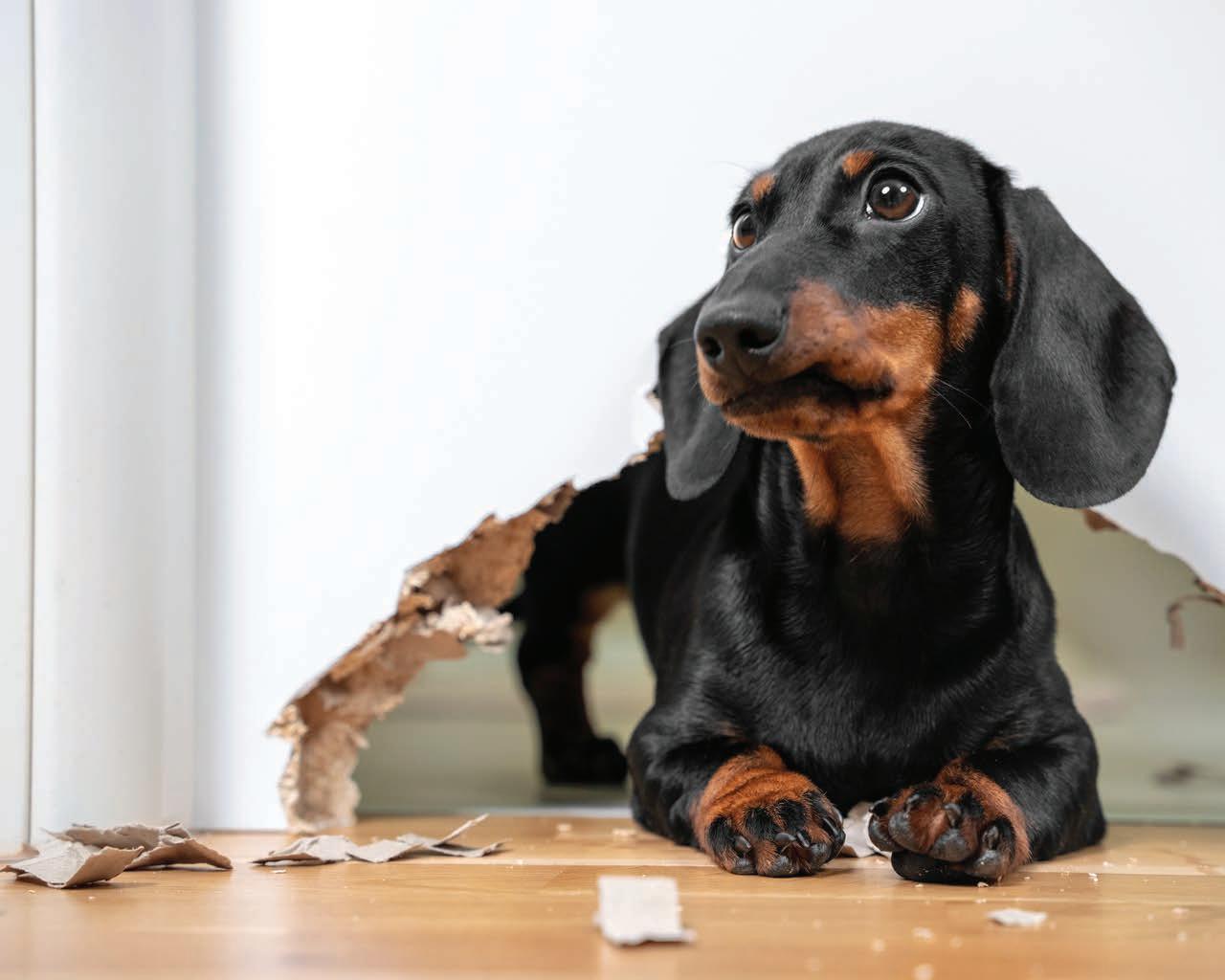


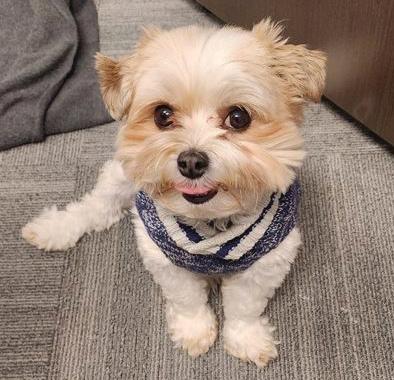

Keeping it cool and playing it safe.
A piece of tranquility or an anxiety filled chore?

Why you should include obtaining a CGN to your training plan?




Editor Rob Caleval
Welcome to the second annual summer edition of Paw Quarterly, a magazine just for you, fellow dog lovers. It's been an odd year weather-wise, with a mild winter, followed by a spring that started out dry and ended up one of the rainiest I can remember, making it difficult to want to even be outdoors. But at last, it's finally summer! Here in Saskatchewan we've learned to make the most of our narrow warm weather window, especially as dog people.
How can we help you do that? I'm glad you asked. First and foremost, let's talk about the safety of our pets during the summer, with important and informative content on safety for heat illnesses and water intoxication. We also have information about eco-friendly weed and pest control. But it's not all about safety, let's have a little fun with our pets too, with articles about Rally Obedience Sport and loose leash skill building. And there's more, with pieces about the Canine Good Neighbour program, the importance of socialization, and information about body handling desensitization.
We hope you'll find this information useful and entertaining, but more importantly we hope you and your dogs have a safe and fun summer. Enjoy!
PAWQuarterly
SUMMER 2024
Volume 2 | Issue 3
COVER PHOTO
Brad Hahn (Canmore, Alberta)
Jim, Bryan and Lacey on the North Saskatchewan River.
CONTRIBUTING EDITOR
Rob Caleval
EDITORIAL & SALES publish@pawquarterly.com sales@pawquarterly.com
DESIGN & PUBLISHING
Tracy Hahn
CONTRIBUTORS
Emily Garland, Nicole Vaughn, May Fischer, Carly Patryluk, Randi Benko and Rebecca Leippi.
SOCIAL
PAWQuarterly is independently owned and published in Regina, Saskatchewan. Opinions and advice expressed in PAWQuarterly are those of the authors and do not necessarily reflect the views of the publisher or advertisers. PAWQuarterly does not assume liability for content. Articles and information are published for information purposes only. For training, health, or nutritional advice specific to your pet, consult with your veterinarian or a trained professional.
All rights reserved ©PAWQuarterly. Reproduction in whole or in part without permission is prohibited. For reproduction requests, please contact publish@pawquarterly.com.


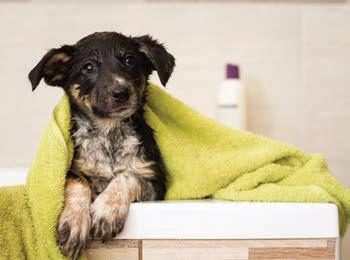

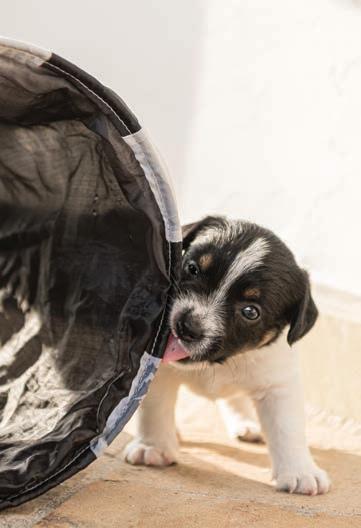
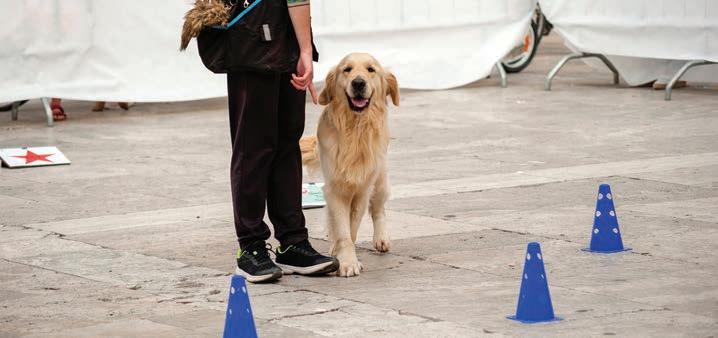

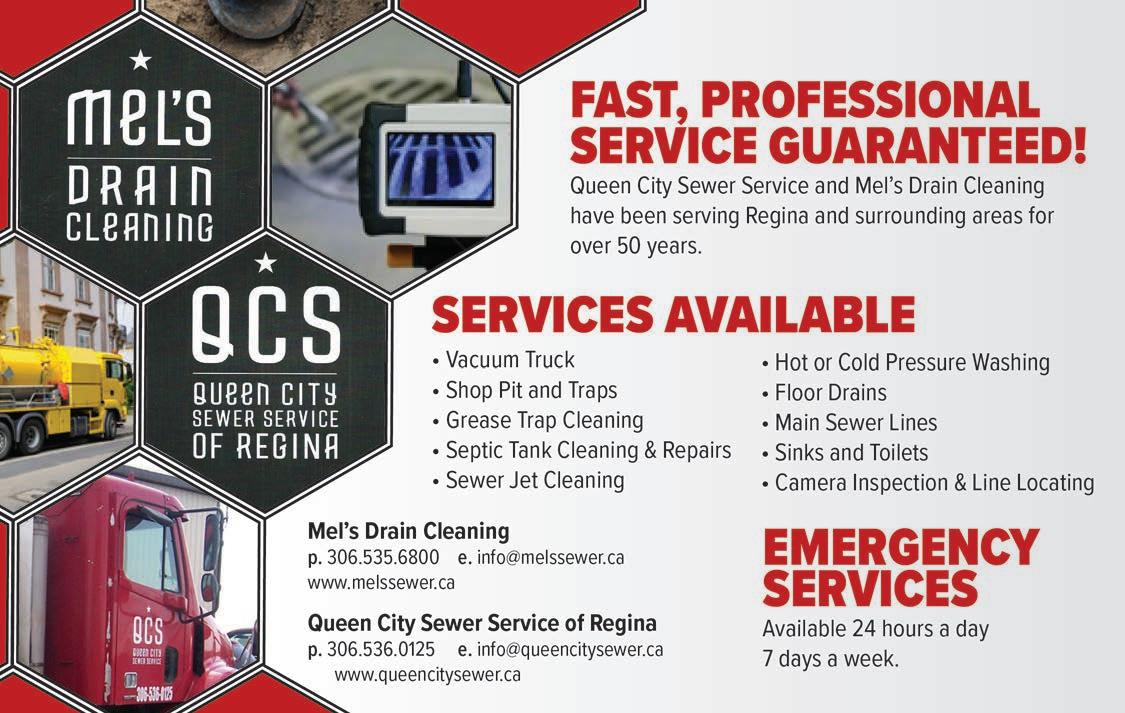

2.3



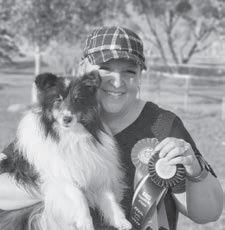
Rob’s poetry and short stories have been published in print and on line. He has a BA in English Literature, and has worked for 17+ years as an Emergency Medical Dispatcher. He spends a significant portion of his free time impersonating a dog bed.
Emily is a Dog Trainer and Behaviour Specialist with over 10 years of experience in SK and BC. She enjoys hanging with her pack and participates in flyball, agility, rally-o, and stunt. Emily and her rescued Border Collie Jinks became the first titled Canadian Stunt Dog Team.
Carly is the owner of House of Paws Pet Boutique and is certified in a variety of pet nutrition areas. Carly believes in continuous learning and when she’s not working with pet parents at her store, she spends her time developing new and engaging methods to empower pet parents to make the best choices for their pet’s nutrition.
May is an owner/instructor at 4 Limb Gym, competitively training for over 14 years. She Co-Captains her own flyball team and has many titles and awards in barn hunt, rally-O, flyball, and obedience. She is a certified trick dog instructor, stunt dog judge, fitness coach, and is a therapy dog, CGN, and animal actors evaluator.



Tracy is a multimedia designer and desktop publisher by day, and a dog sport and training enthusiast by night. Her Olde English Bulldogge, Jack Russell Sport Mix and Mini Heeler Mix keep her busy doing flyball, nosework, agility, and tricks.
Nicole is a veteran dog groomer, trainer, and partner of the Good2Go Dog Sports Club. When she’s not busy making dogs beautiful, you can find her playing flyball, barn hunt, disc, tricks, and agility with one or more of her pack.
Randi's diverse background with animals has led her to the world of dog sports and becoming a coach at 4 Limb Gym. She trains and competes in barn hunt, nosework, rally obedience, disc, flyball, herding, and upland hunting.

Rebecca began to delve into dog training and dog sports in 2012. She has fallen in love with helping others achieve their goals with their dogs, with a particular interest in teaching loose leash walking, puppy training, rally obedience, and agility. When not teaching others, Rebecca competes in agility, rally, barn hunt, and conformation with her dogs.
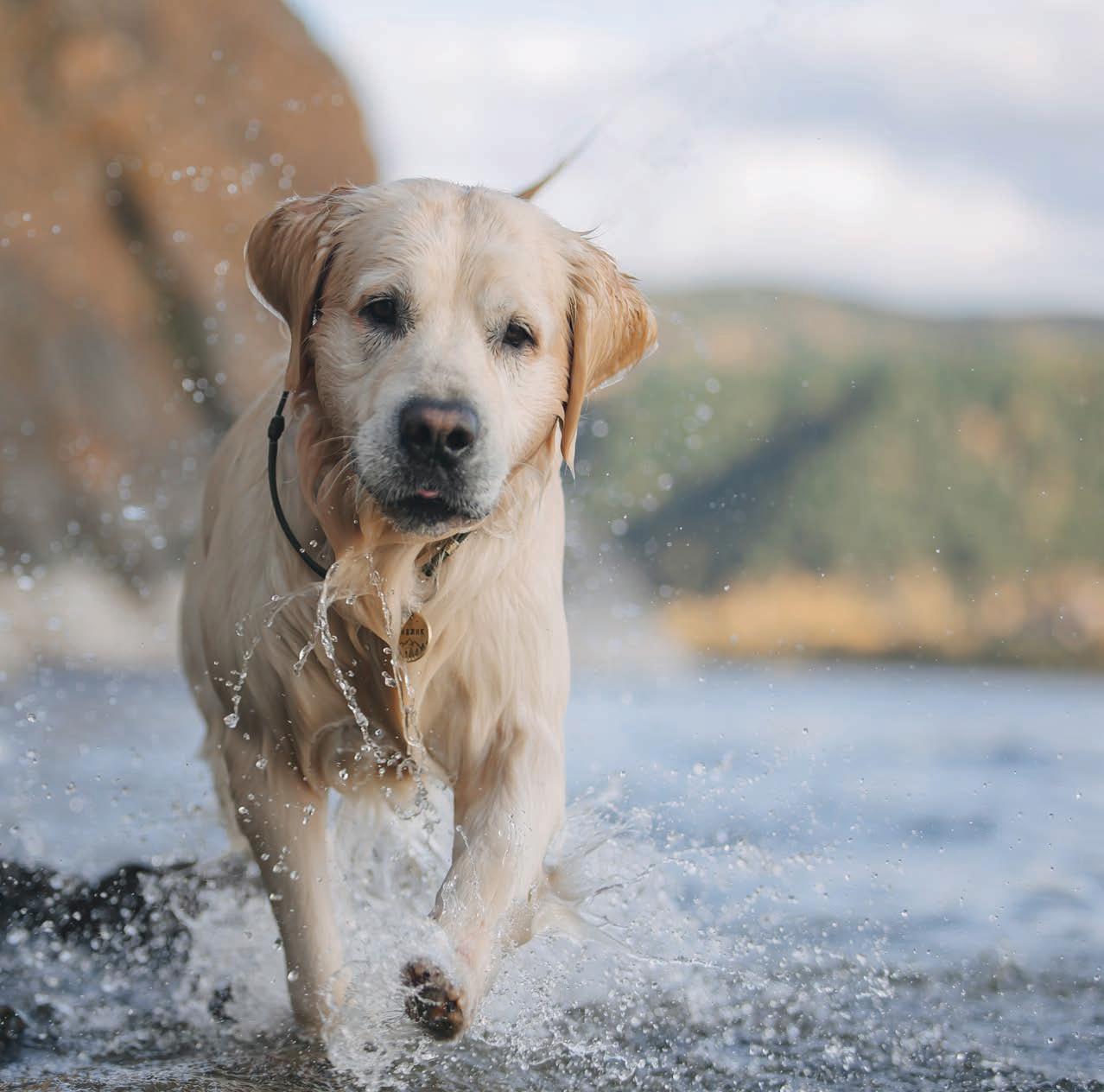
The phrase "dog days of summer" has historical origins, but today, we generally use the phrase to refer to the hottest, and often most humid period of the summer season.
As the summer sun shines bright and temperatures rise, it's important to ensure our furry friends stay safe and comfortable. Dogs can suffer from the same sort of illnesses as humans, and they rely on us to protect them from the seasonal hazards. From preventing heatstroke to monitoring water play and consumption, here are some essential tips to help your dog enjoy a happy and healthy summer.
Just like humans animals can suffer from heat illness too. Dogs are more susceptible to heat illness because they can't regulate their body temperature as well as humans. There are many ways we can prevent this by avoiding extreme heat, provide shade and water, never leave dogs unattended in vehicles, walk your dog on cool surfaces to avoid burning their paws on pavement, and using cooling products like mats, vests, or bandannas that are designed to keep dogs cool. It is also important to be aware of sensitivities in short nose dogs like Bulldogs and Pugs, age and health, and dogs with thick coats that are more vulnerable to heat. A lesser known condition to be aware of while trying to keep your dogs cool is water intoxication.
Early signs of heat exhaustion are panting,excessive drooling, increased heart rate, lethargy, and weakness. More advanced signs are vomiting and diarrhea, confusion or disorientation, seizures, tremors or convulsions, the sudden inability to move or unconsciousness.
If you suspect your dog is suffering from heat illness, immediate action is required!
Move to a Cooler Area
Get your dog out of the heat and into a cool, shaded, or air-conditioned area.
Cool Your Dog Down
Use cool (not cold) water to wet your dog's body. Focus on the head, neck, and chest. You can also use wet towels or place your dog in a cool (not ice-cold) bath.
Hydrate
Offer small amounts of cool water to drink.
Monitor Temperature
A dog's normal temperature is between 100.5°F and 102.5°F. If the temperature is above 104°F, it is an emergency.
Seek Veterinary Care
Even if your dog seems to recover, it's crucial to have them evaluated by a veterinarian as soon as possible. Heatstroke can cause internal damage not immediately apparent.
Water intoxication, also known as water toxicity, is a potentially life-threatening condition that can occur in dogs when they ingest excessive amounts of water in a short period. This can lead to an imbalance in electrolytes, particularly sodium, resulting in serious health issues.
Water intoxication typically occurs when a dog consumes an excessive amount of water quickly. This can happen in various scenarios like playing in water, where your dog can inadvertently ingest large amounts of water. Over indulging in water consumption after exercise. Compulsively drinking water due to behavioral issues or certain medical conditions.
A lot of the early symptoms are similar to heat illness, but additional symptoms may include bloating where the abdomen may appear distended due to excess water intake, pale gums, excessive drooling, dilated pupils or glazed eyes, or in severe cases coma and death if not treated promptly.
We can still keep cool and play safe in the summer months with supervision and awareness, and by using preventative measures to keep our dogs safe. Limit water play with frequent breaks, play in shallow water where the risk is lower. Offer small amounts of water during and after play to help with hydration without excessively drinking.
CGN is an acronym for the Canine Good Neighbour program administered by the Canadian Kennel Club.
While it is a CKC supported program, your dog does not have to be purebred in order to participate. All mixes and breeds are welcomeand encouraged! - to join in the fun.
The CGN is a 12-step assessment created to promote responsible dog ownership. Upon completion, the assumption is that by passing, your dog has proven to be trained to a level in which they use good manners in public, around other people and other dogs.
The evaluation is expected to be performed in busy, public places, not quiet spaces so that your dog can prove its skills outside of a home-like environment. Rewards like toys and food are not permitted during the test, which can be a challenging thing to train for some, but it does help prove that your dogs can respond in situations where you may not have access to rewards outside of praising them.
CGN Evaluators are required to have extensive experience in training and handling various types of dogs, outside of their own personal ones. They are also expected to pass an evaluation of their own and provide professional references to backup their claims. Having standards and expecting evaluators to follow all rules
for implementing a proper CGN test is important as it ensures the evaluations remain consistent no matter where you attend one. Letting things slide or not adhering to the exercises as outlined, diminishes the standards the assessment sets out to accomplish and therefore, the program risks losing credibility with the public.
Each step receives a rating of either “Pass” or “Not Ready”. Dogs who earn a passing grade on all 12 exercises will have completed the evaluation successfully and will receive a certificate from CKC stating that their dog has proven to be a good neighbour and can add the suffix “CGN” to the end of their name.
A “Not Ready” rating might be received for several reasons: a step is not completed accurately, the dog reacts shyly or fearfully, lunges and barks excessively. These are just a few examples. This score does not indicate that the dog is bad or cannot become a good neighbour. It’s simply an

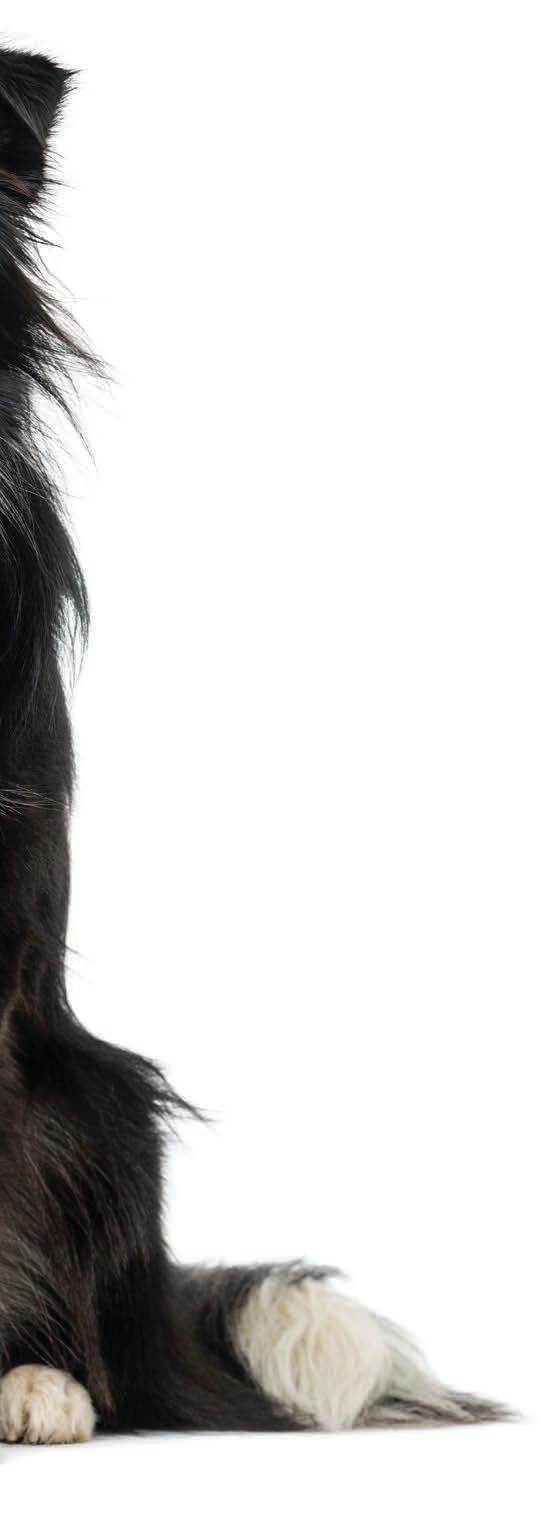
indication that they are not ready at THIS MOMENT and would benefit from some additional training or exposure. One not ready score will result in a non-passing evaluation, but teams are strongly encouraged to continue training and try again at a later time.
Prep sessions offered by training clubs are a great way to get out and pre-test your skills. However, if that’s not an option due to your schedule or class availability, have no fear and head out to your local pet or hardware store that allows dogs inside the building. You can practice most of the exercises on your own in a busy environment, just remember to take an extra-long leash with you for any distance exercises,
as you want to maintain contact with your dog at all times to be safe. Getting your dog out in these types of environments isn’t just good practice for the CGN or other obedience sports, it’s also great for general socialization training.
CGNs should be performed by the owner of the dog and not a handler, as per the rulebook. Any owners with health conditions or impairments are welcome to participate as well. Exercises can receive minor adjustments at the judge’s discretion to aid owners, as long as the dog performs the exercise.
Is your dog ready to give it try?
• Dogs must be at least 12 months or older.
• Provide proof of up-to-date vaccines and any locally required dog licenses.
Walking through a door/gate
• Understand and perform basic obedience commands.
• Remain calm in various social situations.
CGN evaluations do not expire and are valid for the life of the dog who achieves it. However, that doesn’t mean your training should stop there. You should always be adding new challenges to your training for your dog’s sake as well as your own. Keeping them engaged with activities that provide mental and physical stimulation is beneficial to their overall well-being. So teach them a new trick, an advanced obedience skill, or a brand-new sport.
Training is supposed to be fun, for the dog and human, no matter what you’re preparing for. So set aside some time, take a deep breath and enjoy the journey with your furry pal.
A path to confidence and trust through body handling desensitization.

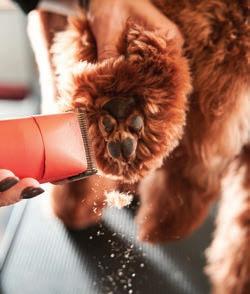

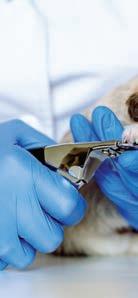
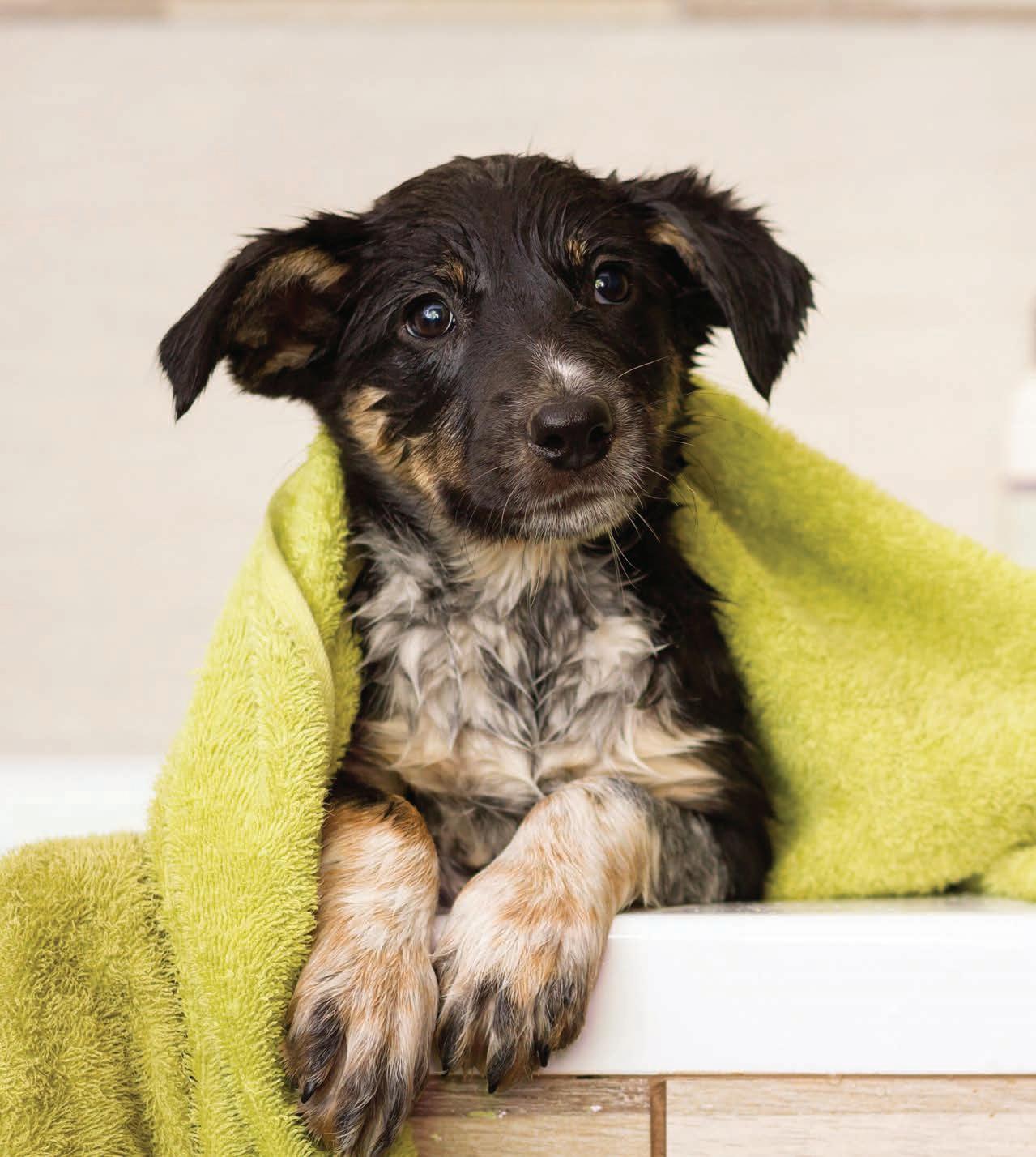
Pet owners often struggle with knowing their furry friend doesn’t seem to love going to the “spa” for bathing, haircuts, or nail trims like they think they should. The reality is, that even regular grooming appointments can be stressful for pets, especially if leaving home only means separation from their people and potentially uncomfortable procedures. The good news is this doesn’t have to be the case, but changing your pet’s view of grooming sessions (or veterinary visits) will take time and careful training!
Puppies and kittens should start experiencing various handling, including nail trims or dremels, brushing, and even some clipping when appropriate, from a very young age. Sometimes this early exposure has been lacking for one reason or another, but older dogs and cats can still learn to accept or even look forward to these things too. It should be noted that acclimation to crating/vehicle travel and even muzzling is also important to this process, as pets who don’t feel good upon arrival at the groomer or vet aren’t going to want to accept treats, or even be touched to begin with!


If you want to help your pet be more comfortable with grooming or veterinary care, start with short sessions at home. Have a quiet, elevated, nonslip space set up in advance for times when you feel like training, and note when your pet is likely to be calmer and a bit hungry to help plan when to start. You’ll want to gently inspect your pet’s body as they allow it (including their mouth, ears, eyes, legs, toes, tail, bum, etc.). You can offer small, tasty treats during these sessions as positive reinforcement, or use a lick mat to help distract your pet.
As time goes on you can up your criteria to include things like brushstrokes, the sensation of nails being tapped by nail clippers, cotton swabbing the ears, having a vibrating toothbrush handle run all over to simulate a clipper or dremel, et cetera. Be aware that some pets may benefit from having a second handler to help steady them, especially for threelegged stands when you lift each leg, as it can be challenging for pets to hold certain positions. Just take it slow and try to end on a good note, but if your


pet starts to stress, don’t be afraid to stop and take a break!

For more advanced help, you can look into subjects such as Cooperative Care (Deb Jones), Crate Games (Susan Garrett), and The Muzzle Up! Project (Maureen Backman), all of which can be found online. Pets who have serious behaviour concerns may need you to work one-on-one with a professional trainer familiar with those programs, or your vet paired up with a veterinary behaviourist. That said, if you stick with it, all of this training has the potential to really help your pet take more invasive handling in stride!
With over twenty years of professional grooming experience, Nicole is always happy to help people keep their dogs clean and happy.
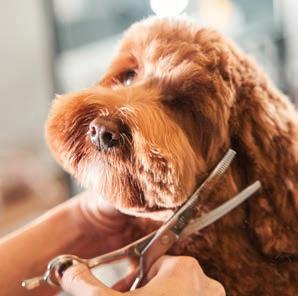
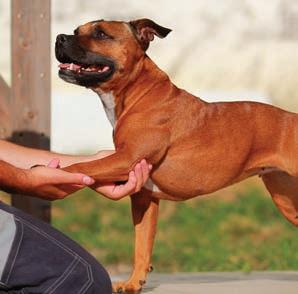

The definition of Socialization the American Veterinary Medical Association gives is “the process of preparing a dog to enjoy interactions and be comfortable with other animals, people, places and activities.”
To expand on this definition, socialization is about exposure to common sights, sounds, textures, environments and interactions, leading to a puppy’s understanding and experiences in the world.

In this multi-part series, I’ll dive deeper into the pieces of socialization and how they impact dogs and homes over lifetimes.
In this segment, we’ll look at many of the factors that contribute to the socialization of dogs BEFORE they go to a new home.
Socialization is about exposure to common sights, sounds, textures, environments and interactions, leading to a puppy’s understanding and experiences in the world.
As early as three weeks, puppies are starting their socialization with their mother, sibling and caregivers. Before humans get directly involved in puppy handling, we have to consider the very important role of genetics in the socialization process.
While there can certainly be variation, by and large, puppies will be similar to one or both of their parents. If parents are calmer adult dogs who welcome new people into their homes with open arms, chances are strong that most of their offspring will be the same. If parents have dog aggression, are highly protective of their yards and/ or have a deep need to chase birds -chances are offspring will inherit those traits too. Whether purebred or mixed

breed, traits -good and bad- are passed down with a high degree of regularity. These temperament traits are often what define breeds. Beagles often get carried away by their noses, herding dogs want to control movement and huskies want to run and run and run.
In cases of mixed breeds where parent dogs may be very different, puppies can grab any combination of traits their parents have. If you think of how different siblings can look from each other in some litters, the same is true in their temperaments!
No matter how good your socialization practices are, it’s near impossible to turn a husky mix into a border collie -or vice versa. You can certainly help shape
puppies as nature and nurture work together, but at the end of the day, there is a lot out of your control.
For anyone going to meet puppies in person, whether from a breeder or rescue, look heavily at the parents, especially the mother dog who has been raising the puppies. Is mom hyperactive? Friendly to visitors? Barking or protective? Mom is your biggest genetic window. There’s a strong chance puppies will be A LOT like mom. If mom is not in the picture, you will be taking a bigger gamble on what behaviours may be in your new puppy. This isn’t to say rescue puppies are poor choices for families -there are lots of lovely rescue dogs and I share my life with the most happy puppy mill rescue in existence-, only that homes adopting these puppies should be prepared for a wide variety of behaviour in their adult dog.
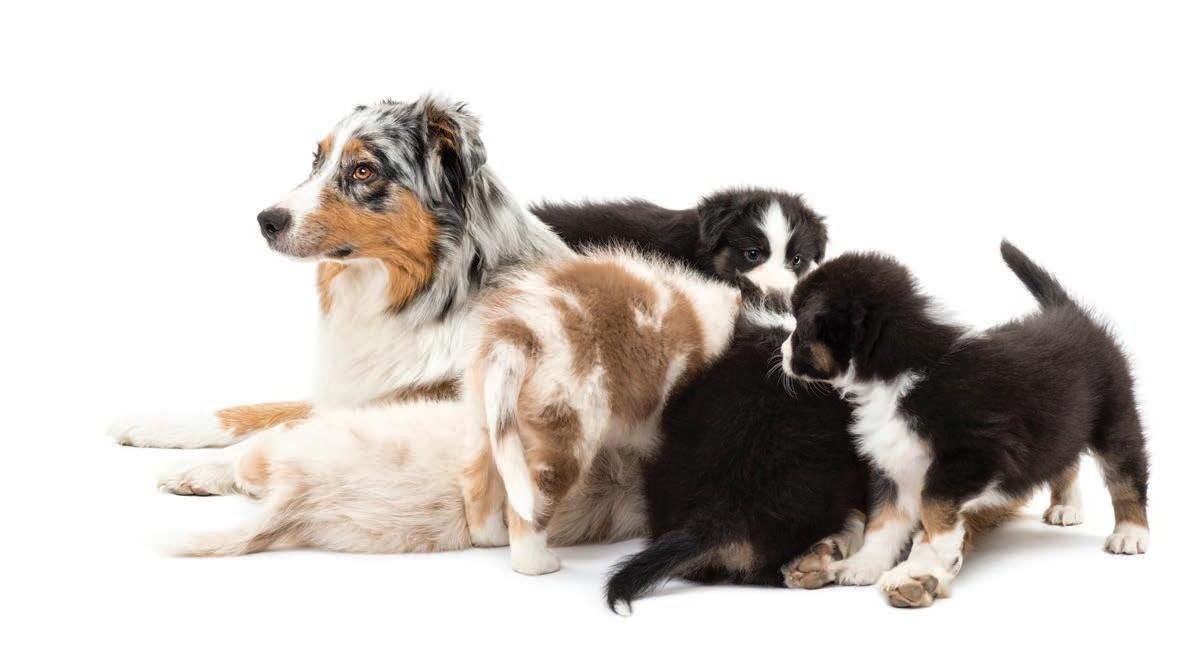
The next part of the picture will be the Environment. Do the puppies get lots of early exposure to people? Other dogs? Noises? Indoor environments? Outdoor environments? While no breeder or foster can cover every conceivable basis, puppies raised with a wide variety of experiences and interactions in their early weeks are much more likely to take those experiences in as normal occurrences and not as likely to be fearful of similar circumstances down the road.
When we look at puppies, their parents and their environments, we should see that side by side with our current environment, and how a puppy will fit into it. Farm dogs who rarely leave the farm may show desirable behaviour in their environments, but we don’t know how they would deal with city life, or how they might fare as mostly indoor dogs with outlets. They might do just fine! You might need to up their early socialization in key areas to bridge the gap. Or they may struggle outside of
the type of environment their parents and close family members succeed in.
In one example close to me, in looking for my Labrador, where many working lines are predominately kennel/work dogs and not primarily indoor family companions, it was important for me to find parents who lived easily in the house. I chose a very small breeder, with fewer titles and accomplishments behind them, but where the dogs lived easily in the house while playing hard in the field. She fit into our home seamlessly.
By choosing parents that show desirable behaviour and are also living well in an environment similar to your own, you hedge your bets that puppies will exhibit behaviours that work with your home and lifestyle. That’s not to say other puppies wouldn’t work out just fine, you’re just working with far less information. Wonderful dogs can come from anywhere, but the more moving pieces in your life, the easier it is to stack the odds in your favour.
If you have kids, seek out a puppy from a breeder or foster home with kids or heavy exposure to kids. If you have cats, you can stack the odds in your favour by finding a puppy that is already in a home with a cat. By choosing our dogs carefully, we end up with fewer dogs surrendered to shelters or rescues, happier families and human-dog bonds that are better matched.
Our next segment will look at bridging the socialization from breeder or rescue into the home.
EMILY GARLAND, CPDT‑KA, MFA Trainer and Behavioural Specialist
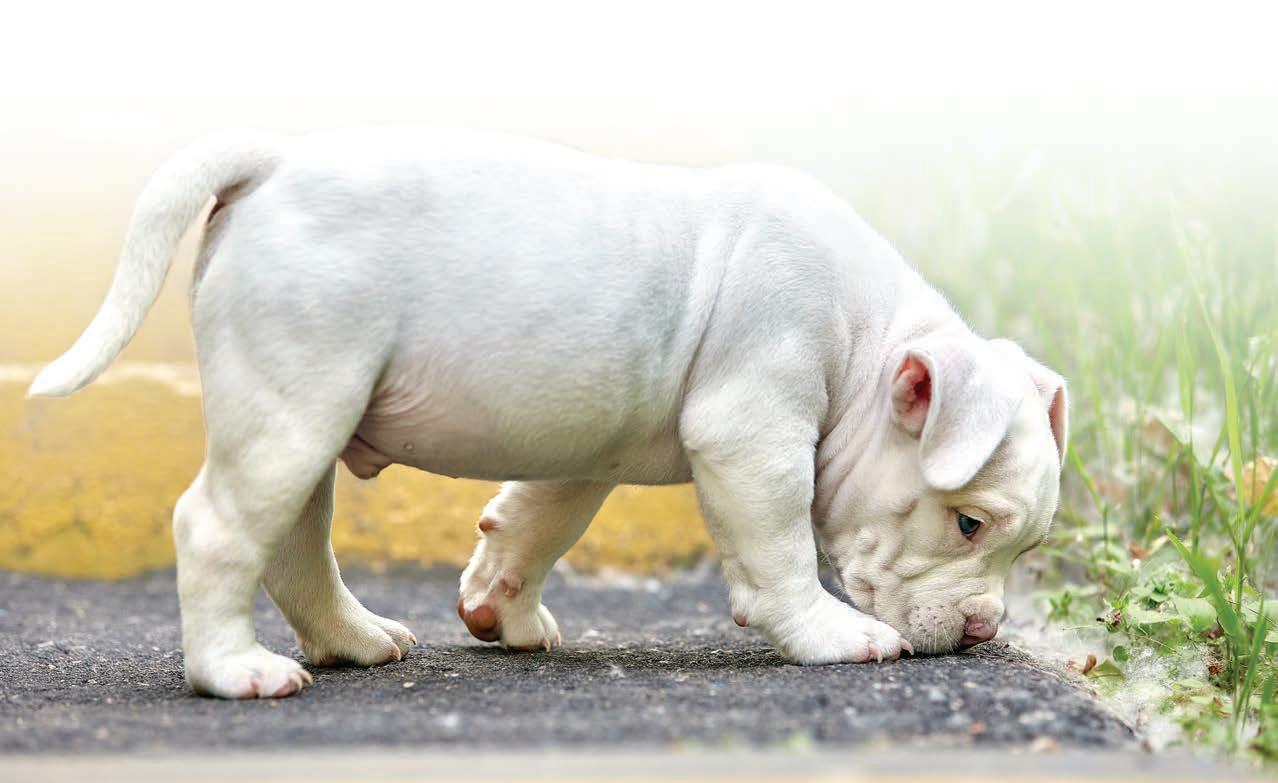


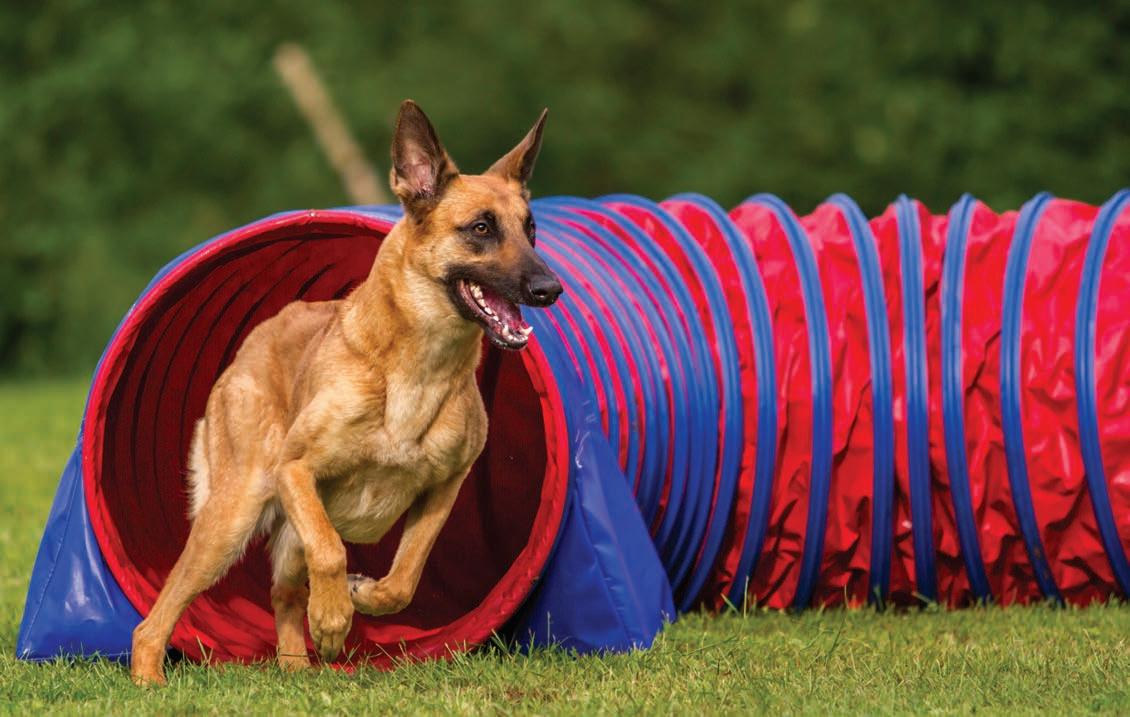

To go for a walk with your dog can be one of life’s simple pleasures. Whether walking on a city path or a hiking path in the mountains, a calm, relaxing walk can be exactly what you need to drive away your stress. Unfortunately, the tranquility of a walk is out of reach for many dog owners. Instead, the walk is a frustrating mess of pulling, lunging, and barking, or an anxiety filled chore of hoping not to encounter anything that might trigger over-arousal or fear.

A peaceful walk is a hard-earned reward; training a dog to walk with a loose leash can be one of the most difficult skills to teach.
• We expect our dogs to walk in a way that is not natural to them.
• We require our dogs to walk in a straight line, stay close to us, and maintain a pace that matches our own.
• We prefer that our dogs ignore all the enticing smells around them and not pause to examine anything with their powerful nose.
• We want our dogs to remain calm and neutral throughout the entire walk, regardless of what they see or encounter.
Honestly, every single walk has the potential to throw an unwelcome situation at us and our dogs.
For example, the regular occurrence of encountering another dog and a human can be particularly frustrating— especially if the other dog starts straining at the end of their leash, barking excitedly. This is a tenuous scenario for several reasons. Is the dog wanting to meet and play or is the dog uncomfortable and nervous? If the former, there can be social pressure to let the dogs meet, which is not advisable.
Most dogs do not want to be friends or prefer to have a select few dog friends. Allowing two unfamiliar dogs to meet on leash, especially if one is overexcited, is abnormal for them. Dogs often feel trapped by the leash because they cannot get away from the situation forcing the dogs into each other’s space. If the dog starts to feel uncomfortable or overwhelmed, they might try to run away or lash out in an attempt to get the other dog to respect their space. If this kind of encounter occurs regularly, a dog will likely start to associate those negative feelings with any dog they see while out walking, and all sorts of unwanted, problematic behaviours will result.
On the other hand, if a dog loves to meet and play with most dogs, allowing them to greet every dog they see could result in overexcited barking and
a dog always on alert for other dogs and instantly having a response when seeing another dog. The calm walk suddenly no longer exists, and this is only one scenario out of countless possible encounters that could interrupt a walk.
How then, can the aggravating routine of unwanted behaviour be transformed into the desired calm walk? Unfortunately, there isn’t an instant solution. Walking in a straight line, staying close to us, maintaining a regular pace, ignoring enticing smells, and remaining calm in an everchanging environment is a lot to ask. It is like expecting someone new to running to be able to finish a marathon! There may be a few people who would be able to complete the race, for many it would be a challenge or downright impossible. So how do we tackle this

This may seem a bit silly, but taking the time to clearly define your expectations of your dog while walking is quite valuable. Doing so allows you to communicate consistently with your dog. If during a walk the dog is allowed to pull and then the next walk it is not allowed to pull, the dog is not going to understand what it is supposed to do.
The phrase “loose leash walking” implies that the dog will not pull. Does this mean there should always be slack in the leash? Does this mean the dog’s position should always be at our side or can the dog walk out in front as long as the leash is loose? Does this mean the dog can sniff things or should the dog never sniff? Decide what will work best for you and your dog and apply your expectations consistently during every walk.
The outside world is an exciting place for our dogs. To ensure your dog will listen and engage with you, you must be more valuable to them than all of the new exciting things they see or smell outside. To build value for yourself, try playing simple games or doing simple tricks regularly with your dog in your home. When you feel your dog is fully engaged while working with you in your home, try doing the same thing in quiet, low-distraction areas outside (like your backyard or an empty parking lot). While playing these games, use high value treats or toys as a reward.
Another thing to help increase your value is to play and work with your dog before walking. Play fetch, simple games, or do simple tricks, anything that helps get some energy out of your dog. Yes, we want the walk to be a form of exercise for us and our dogs, but trying to ask our dogs to focus on you when they are full of energy is like asking us to ignore a buffet of our favourite food and drink.
No dog is born understanding how to walk on a leash, let alone a loose leash, so we must teach it just as we teach our dogs to sit or lie down. There are numerous methods on how to achieve this, but it comes down to the main concept of establishing the rule: if the dog pulls, they are not allowed to go in the direction they are pulling.
To start showing your dog that pulling results in them not getting to go where they want, try calling your dog to encourage them to follow you, then turn around and walk in the opposite direction when they pull. Repeat every time they pull. Doing this exercise will not get you far from your starting point, so it is recommended to practice in an area where the intention is not to walk far. If it takes 15 minutes or more to get to the end of your driveway, that’s okay! It is well worth making the effort to show your dog that every time they pull, they get redirected from their desired destination. Short, frequent 15 minute practices will gain more success than hour-long sessions of training.
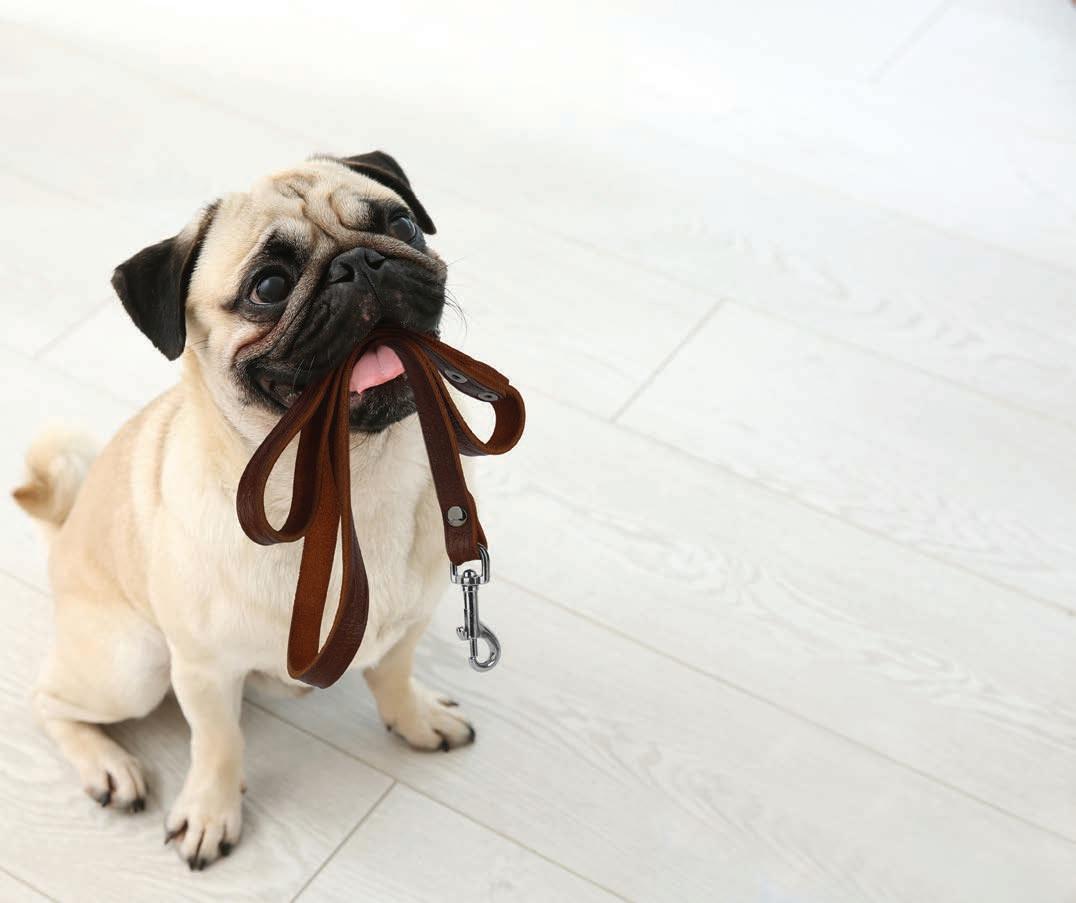
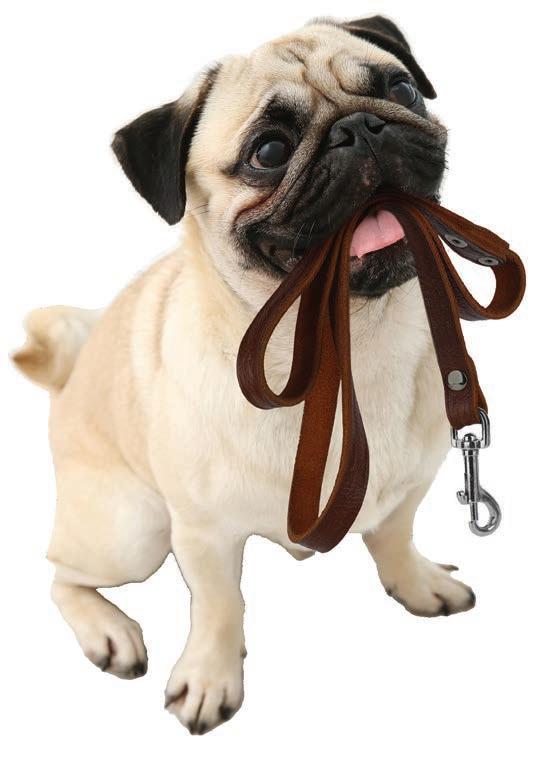
While working with your dog, you find your dog is not interested in you, this generally indicates the treats or toys are not appealing enough, or your dog is too overwhelmed; there are too many distractions for your dog at that moment.

Be sure to have the proper equipment. A 4 to 6 ft leash, with a properly fitted collar or harness, is recommended. Long lines and retractable leashes are great for hikes, but when teaching loose leash walking, they are a hindrance. Having a short leash will help you keep your balance and give you more control when your dog does pull.
Remember, you must stop the cycle of pulling because if a dog is allowed to pull, they will continue to pull.
Sniffing is one of the major causes of pulling; sniffing is a natural part of being a dog and dogs want to pull their owners to enticing odours. There is no standard rule on whether a dog should or should not be allowed to sniff, so you need to decide for yourself what you would like your dog to do on your walk. Remember Goal 1, you define what your expectations are.
It can be easy to accidentally allow your dog to drag you to a spot to smell. Be consistent and practice walking with a short leash to limit your dog’s access to smells and in areas with fewer distractions.
If you don't want to allow constant sniffing, establish when and where your dog is allowed to sniff. Ultimately, we want to show them they will eventually get to where they want to sniff, as long as they do not pull. There are several ways to accomplish this, but one way to start is if your dog starts to pull you towards a smell, stop walking entirely. Pause and wait to see what your dog does. If you notice the leash gets less taut or your dog looks at you, celebrate and rush forward and let your dog sniff as a reward. Let them smell for a moment and then continue walking.
Sniffing can be a fantastic tool for helping a dog decompress on a walk, so unless you have a terribly stubborn sniffer where stricter expectations may be needed to break a habit, allowing your dog to sniff within the boundaries of your expectations can help your dog relax.
What you encounter around you is what makes walking dogs potentially volatile. People, dogs, rabbits, bikes, cars, butterflies…anything and everything has the potential to distract your dog. Each encounter can compound on one another, building anxiety and excitement, until it bursts out. It may be impossible for your dog to focus on you and what you are trying to teach when there is so much going on around them. If you are really struggling, being intentional in selecting quiet places to train is integral to your success.
These quiet places may include your house, your yard, your driveway, walking paths when they are not busy, or parking lots. Parking lots are recommended by many trainers because it limits the proximity of smells, wildlife, and people. This makes it easier for your dog to see and focus on you, treats, and toys. As you and your dog become more confident and comfortable, start to practice in areas with more distractions. If you go to a place and your dog cannot focus, you may have tried to progress too fast. That’s okay! Just take a step back and continue to work on the foundations before trying again.
It takes a significant amount of training for both you and your dog to meet all your expectations. Have patience, not only with your dog but with yourself; it is well worth the effort to build a solid foundation of the skills you need to walk your dog with confidence. Remember, you are training for that marathon, and everyone progresses differently and in their own time. If you are struggling, don't be afraid to reach out to your local trainers, they are there to help you!
Lastly, remember, it’s okay to advocate for yourself and your dog! If you come across another dog and do not want your dog to meet, it’s OK to politely refuse the greeting. If you do want the dogs to meet, ask if it is okay. If the other person does not want them to meet, respect that. We are all working hard with our dogs to train and create a peaceful walking routine.


A lot of people think that Rally Obedience is a stuffy, boring sport. I thought the same thing! I tried it out to give my busy dog something slow and thoughtful to do and I fell in love with it. It helped build a better connection between me and my dog and helped work our on and off leash skills, and we have had a lot of fun doing it! I also think people assume it is an “easy” sport. While CKC Novice and Intermediate are relatively easy, it’s a very challenging sport that requires dedication and training.
Rally Obedience, or Rally-O, is a sport that sees dogs and handlers maneuver through a numbered course within an allotted time. On the course, you will see between 10 and 20 stations, depending on the level and the organization. Station signs are made up of sits, downs, pace changes, turns, and more. Once you get to the higher levels, you will also see jumps, tunnels, and weave poles! Rally turns basic obedience into fun and flashy tricks.
Two main Rally associations regularly hold trials in Saskatchewan: the Canadian Association of Rally Obedience (CARO) and the Canadian Kennel Club (CKC). Other provinces have other associations, such as CanineWork and Games (C-WAGS) and United Kennel Club (UKC) that also offer Rally Obedience.
CARO is an extremely inclusive and welcoming association. Purebred and mix breeds are welcome to play, and you can apply for handler and dog modifications if needed - for example, if you can't pivot due to your bad knee or your older dog requires a lower (or no) jump, you can apply for those modifications. CARO wants you and your dog to be able to participate and to have fun doing it!
To compete in a CARO trial, you must obtain a one-time registration number for your dog. Once your dog is registered, you can compete in in-person and virtual trials. Virtual trials?! Yes! Every year, CARO hosts two virtual trials. These take place in the spring and fall and usually do not have an entry limit. Judges are assigned to
each class, and you set up your course according to the judges' maps, record your run, and send it to the appropriate judge. You are scored the same as in person trials and all qualifying scores go towards your dog's title. This is a great option for remote locations that host very few trials or for folks with reactive dogs.
In CARO, there are 5 main classes: Novice, Advanced, Excellent, Versatility, and Versatility Excellent. For each of these, dogs and handlers start with 200 points and may incur deductions based on the performance of each station sign. Each class requires 3 qualifying runs, with a minimum score of 170 per run, to earn that class title. All classes have between 15 and 20 station signs, which include Start and Finish and may contain station signs selected from all classes up to and including that class. All classes have a time limit of 3 minutes, except for Novice, which may be 3 or 4 minutes, depending on the judge and their course.
Novice, Advanced, and Excellent see dogs heeling on the handler’s left side. In Novice and Advanced, handlers may use physical praise (petting) and/or food rewards at dedicated station signs. Once at the Excellent level, physical and food rewards are no longer permitted. Versatility and Versatility Excellent are the same as Excellent, though dogs will change heel position, from right to left or left to right, 3 or 4 times throughout the course. As you move to the higher classes, station signs become more complex, testing the skills of dogs and handlers.
CARO also has several other titling opportunities: Regular Championship, Lifetime Achievement Award, Supreme Championship, Brace, Team, and Team Champion. Each of these additional titles takes dedication and serious skill to achieve!
The Canadian Kennel Club is the primary registry for purebred dogs in Canada, and as such, focuses on purebred, registered dogs. That does not mean mixes or unregistered dogs can't compete, it just means there are a few more steps to register them to play. For mixed breed or unregistered dogs, CKC requires a one-time registration fee to be paid to enter trials, though, once registered, dogs can enter most other CKC sanctioned sports. CKC registered dogs do not need an additional registration number to be able to compete.
Many CKC Rally Obedience trials are held in conjunction with conformation shows. This can add additional challenges, as it makes for an extra distracting environment, especially for those not accustomed to that type of environment, so proofing in public spaces will be beneficial to your success! However, there are also independently run trials for those who need a little less activity.
While CKC does not allow for modifications for dogs, modifications to the course may be made for handlers with disabilities, at the judge’s discretion, so long as the modification does not aid the dog’s performance and the dog performs all the station signs.
In CKC, there are 5 main classes: Novice, Intermediate (optional), Advanced, Excellent, and Master. Each class requires 3 qualifying runs, under 2 or more judges, to earn that class title. As with CARO, you are judged on your performance of each station sign, starting with 100 points and incurring deductions based on the judge’s opinion of your performance. All classes have a 4-minute time allotment.
Novice and Intermediate classes are performed on a leash and require a minimum score of 70 to pass. While Intermediate is not a required level, it is a nice option to remain on-leash for those dogs that may need more time before moving on to Advanced. Dogs may compete in Intermediate indefinitely. Advanced and Excellent classes also require a minimum score of 70 points to pass, though dogs compete off-leash. Master classes are off-leash as well, but require a minimum score of 85 to pass.
Like CARO, CKC has several additional titling opportunities: Advanced Excellent, Master Excellent, Champion, and Grand Champion. Some CKC Rally Obedience trials may also offer Brace and Team classes, though these are unofficial classes with no title associated.
Why choose?! Playing in both associations offers similar platforms, with some fun and unique differences. The important thing is that you are getting out with your dog, learning something new, increasing your bond, and exercising their minds and bodies! One of the biggest things to keep in mind on your rally journey is the importance of using a rewards-based training system because you want a happy, working partner, not a robot!
Whether you choose to compete with CKC or CARO (or both!), or if you just want to get out and do something with your dog, I encourage you to give Rally Obedience a try!
As the weather warms up and we start to spend more time outdoors, mosquito season is in full swing and the weeds may be starting to take over the yard.
Instead of using nasty chemical sprays, why not try a natural recipe that can be just as effective as commercial products but also eco-friendly and safe for your pets.
Creating a safe outdoor environment is essential, particularly in the summer months when exposure levels can peak. By choosing natural yard care solutions, you're not just beautifying your yard—you're also safeguarding the health of your pets and family. Be sure to use precaution while preparing the sprays and during application.
Remember—your choices do make a difference!
Embrace a natural approach to yard care with a DIY weed killer recipe that's safe for pets and the planet! It's important to note it will kill any foliage it comes in contact with so don't spray it on grass or around other plants.
Combine thoroughly:
• 1L of 10% acetic vinegar
• 1oz Orange essential oil
• 1/2 oz Cinnamon essential oil
Spray solution directly on the weeds in the heat of the day, preferably when the temperature is 20˚C or hotter. It's best to spray when the soil is dry, so don't spray when there's rain in the forecast.
Keep pets off sprayed areas until the solution is dry.
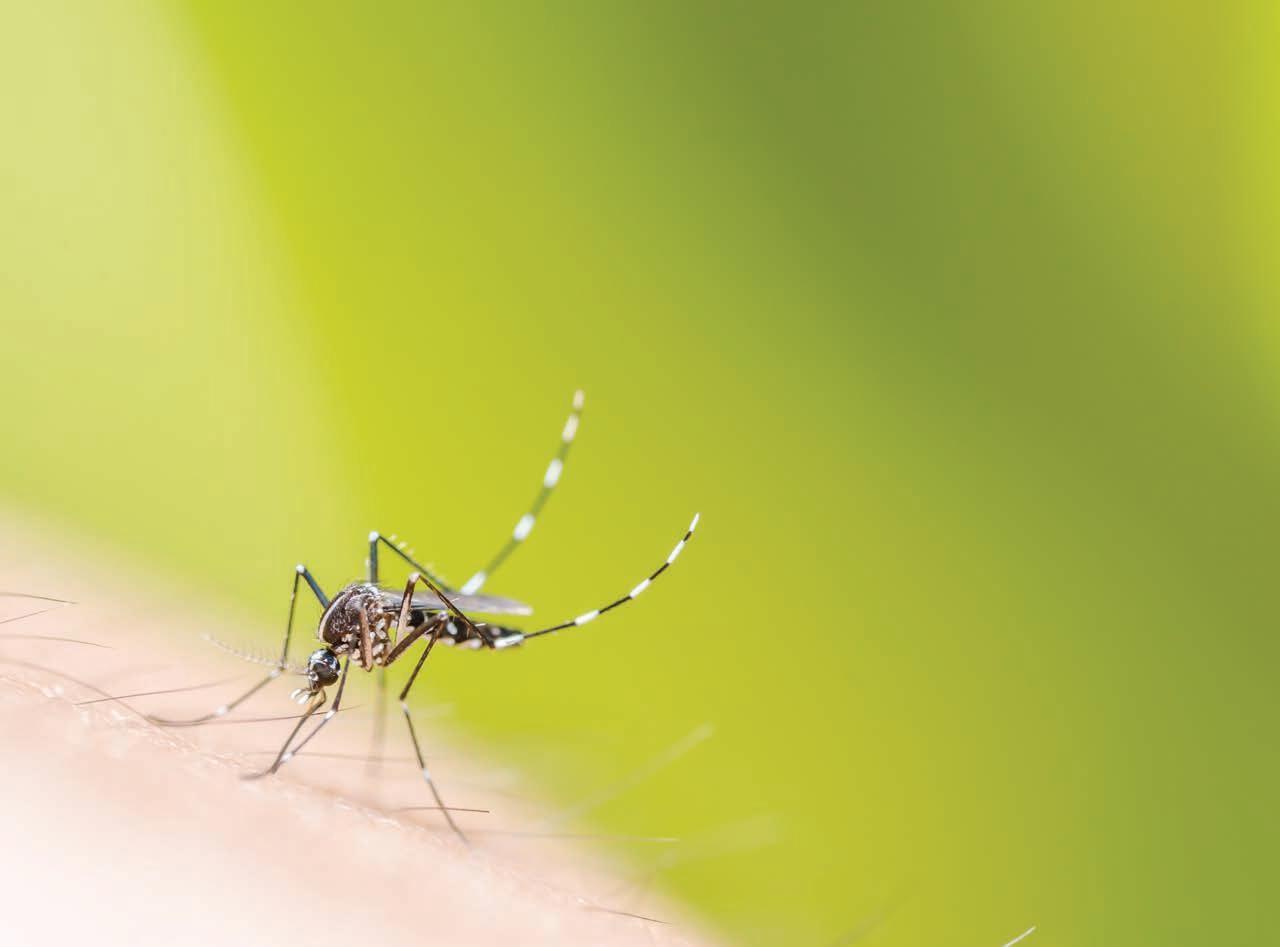
Instead of using those nasty chemical sprays that contain deet or permethrin, why not try a natural recipe that’s just as effective as commercial products but also eco-friendly and completely safe for your pets. You can make it at home with things you likely already have.
thoroughly:
• 1 cup Epsom Salt
• 1 can of flat beer
(cheap and stale is what you want)
• 3/4 cup of mint mouthwash (cheap is fine)
• 1 spray bottle
Combine all the ingredients in a spray bottle and shake well until the Epsom salt is fully dissolved. Spray around your seating areas, garden perimeter, and anywhere else you and your pets like to spend time outdoors that always seems to be ruined by the uninvited pesky guests!
CARLY PATRYLUK House of Paws Pet Boutique
Do you have a story you would like to share?
PAW Quarterly invites you to submit your story for a chance to get published in an issue of PQ.
Get published in PQ!
Email: publish@pawquarterly.com
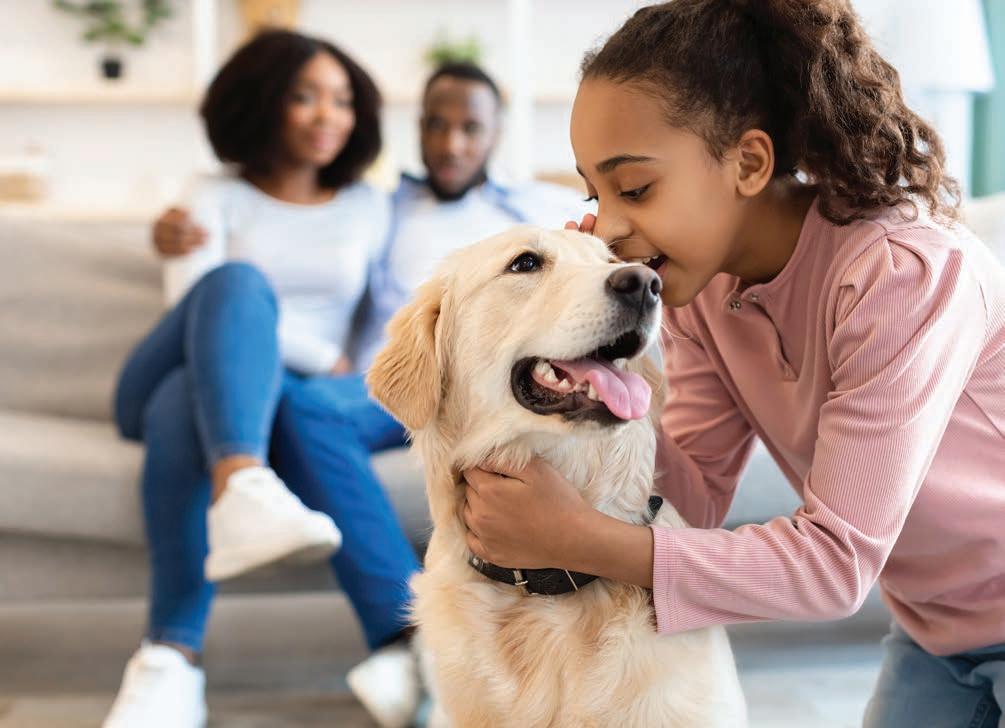

Cool Canine Delights can be made with any blend of dog-safe fruit and water, frozen in ice cube trays or fancy silicone moulds ready to enjoy the next day. But why not add some Greek Yogurt for a more ice creamlike treat.
• 2 cups of watermelon
• 1 cup of water or Greek Yogurt Optional
• Fresh or dehydrated blueberries. (Whole or diced.)
1. Purée in a blender for a smooth texture. If adding blueberries, add them after you have puréed the watermelon.
2. Spoon the mixture into silicone moulds and place on a cookie sheet for support.
3. Freeze level until completely solid or overnight.
4. Once frozen, pop out of the mould and store in the freezer in an air-tight container.
Other combinations to try are pumpkin purée and yogurt, peanut butter and banana, or even just water with diced fruit to freeze in your favourite moulds.
Getting your dog to drink water on those hot days can sometimes be tough. They may already be overheated and not interested in water or just too busy having fun to care. To entice your dog to drink more water you may need to add bait to it. Bait? Yes, bait!
Add flavour to the water by adding low-sodium chicken or beef broth. You can freeze water or broth into ice cubes and add them to the water bowl. Some dogs enjoy chewing on the ice cubes, which also helps keep them cool.
For something extra special offer your pets hydrating treats such as pieces of watermelon or cucumber slices, which contain high water content. Your pets will love you for it!
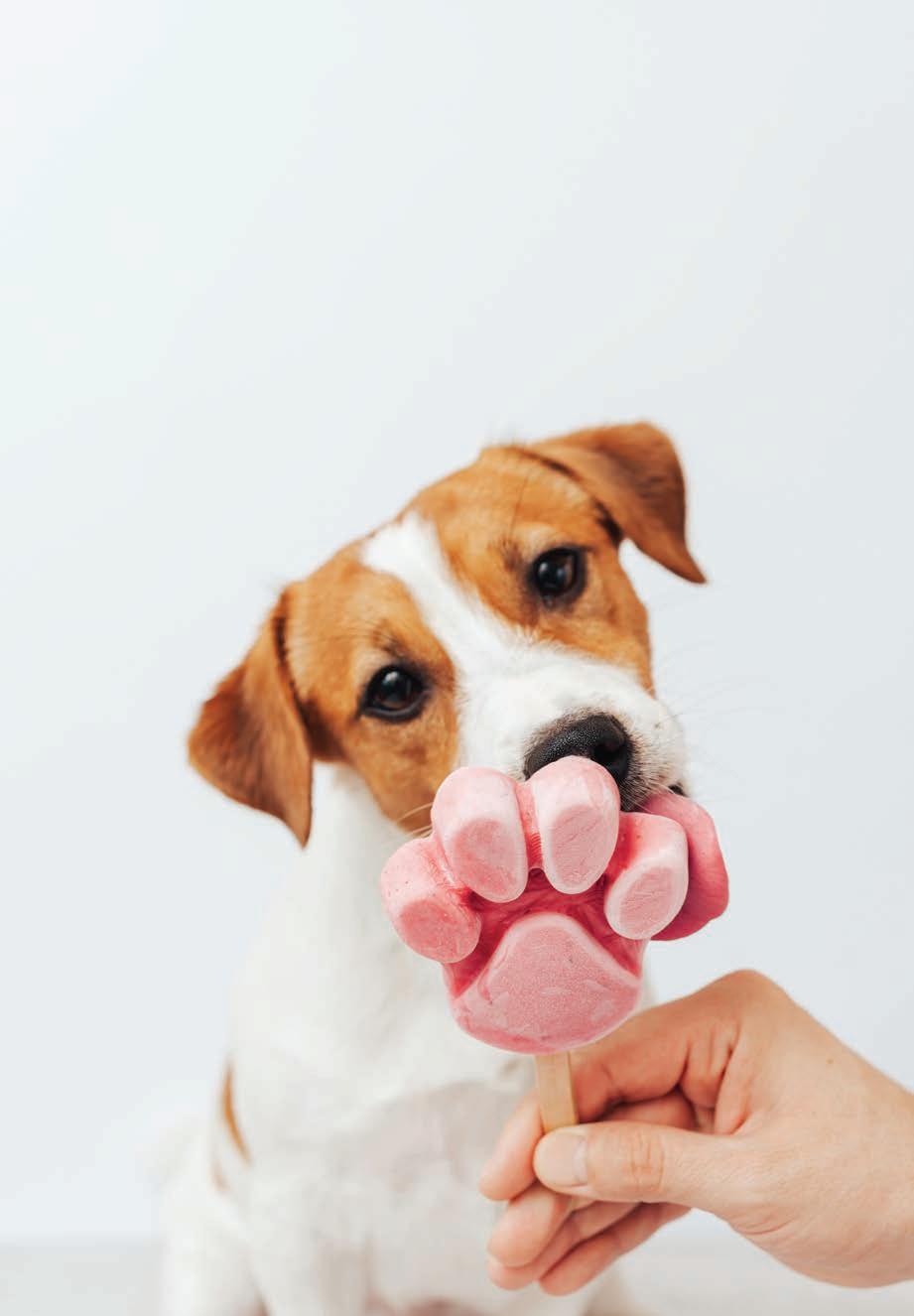
Recipes are intended to be a treat. If your pet has any health issues, or if you have any concerns, consult your pet’s veterinarian before offering this treat to your dog.
e. sales@westernlitho.ca p. 306.525.8796 tf: 1.877.445.4846 www.westernlitho.ca


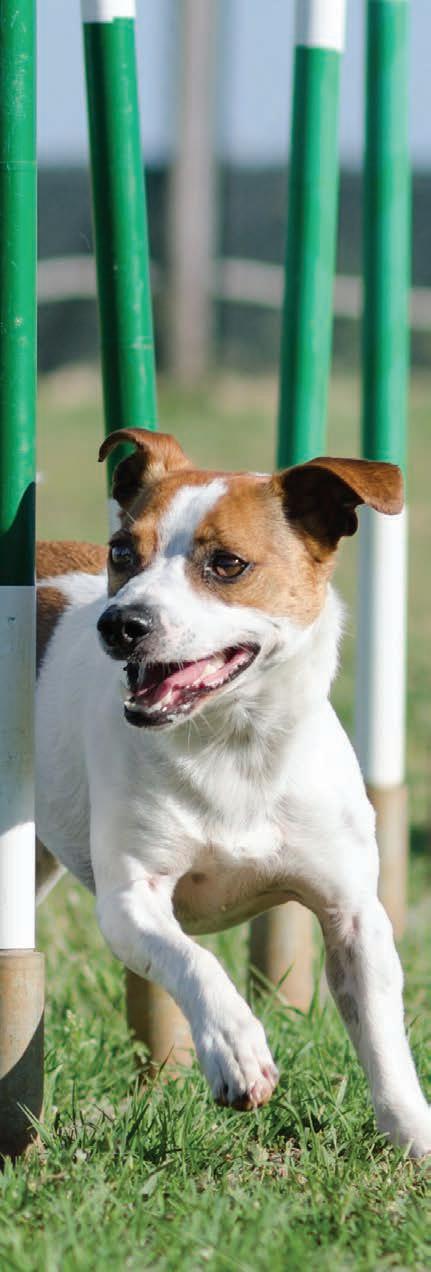
JUL 6/7, 2024 SK FLYBALL
Good2Go Flyball
Pilot Butte Rec Complex 222 Diamond Pl www.good2goflyball.com dogspeed@gmail.com
JUL 11, 2024 AB
Rally Obedience
Rocky Mountain Working Herding Club Of Alberta
Wet Noses Bed & Biscuit, 223042 AB-2 Carseland, AB T0J 0M0 www.facebook.com/rockymountainworkingherding pucsconf@gmail.com
JUL 13/14, 2024 SK
AAC Agility Trial
Prince Albert Kennel Club
Prince Albert Exhibition Grounds
Box 954, Prince Albert, SK www.aactrialresults/www.pakoc.com penny.ross@shaw.ca
JUL 13/14, 2024 AB
AAC Agility Trial
Performance Agility Club of Edmonton
Killarney Community Centre
8720 130A Ave., Edmonton, AB www.paceagility.org president@paceagility.org
JUL 14, 2024 AB
SDDA Nosework Trial
Lacombe AG grounds 4200 58 St, Lacombe, AB www.sdda.ca kdsveinson@gmail.com
JUL 16, 2024 AB
AAC ‑ Agility Trial
Muthut Agility
Berryman Ranch
70 50050 Rge Rd 233, Leduc County, AB trials@seespot-run.com seespot-run.com
JUL 18 21, 2024 AB
BARN HUNT
Cultured Canines
Sleep Rover - Side building, back entrance 735 41 Ave NE, Calgary, AB T2E6R5 www.culturedcanines.ca info@culturedcanines.ca
JUL 19‑21, 2024 AB
AAC ‑ Agility Trial
Dog On It Sports 54221 Hwy 21, Strathcona County, AB dogonitsports.com dogonitsports@gmail.com
JUL 20, 2024 AB
AAC ‑ Agility Trial
Rocky Mountain Agility Club
Okotoks Agricultural Society, Okotoks, AB www.rockymountainagility.com rmactrialsecretary@gmail.com
JUL 22/23, 2024 AB
BARN HUNT
Cultured Canines
Sleep Rover - Side building, back entrance 735 41 Ave NE, Calgary, AB T2E6R5 www.culturedcanines.ca info@culturedcanines.ca
JUL 23 & 30, 2024 AB
AAC Agility Trial
Muthut Agility
Berryman Ranch
70 50050 Rge Rd 233, Leduc County, AB trials@seespot-run.com seespot-run.com
JUL 24, 2024 SK
AAC Agility Trial
Furever Fun Dog Training
Over The Top Riding Arena, Moose Jaw, SK dsweekes.wixsite.com/furever-fun dsweekes@shaw.ca
JUL 27, 2024 SK
AAC Agility Trial
Furever Fun Dog Training
Over The Top Riding Arena, Moose Jaw, SK dsweekes.wixsite.com/furever-fun dsweekes@shaw.ca
JUL 27, 2024 SK
AAC Agility Trial
Standsure Agility Club
3D Distributors, 395 - 38 St E, Prince Albert, SK www.facebook.com/groups/www.bordercollie.ca standsure@sasktel.net
JUL 31, 2024 SK
AAC Agility Trial
Furever Fun Dog Training
Over The Top Riding Arena, Moose Jaw, SK dsweekes.wixsite.com/furever-fun dsweekes@shaw.ca
JUL 27/28, 2024 SK FLYBALL
Breakaway Flyball
AJM Davies Arena, Howard Street, Indian Head, SK peterwesdyk@gmail.com
AUG 6, 2024 AB
AAC Agility Trial
Muthut Agility - Berryman Ranch
70 50050 Rge Rd 233, Leduc County, AB trials@seespot-run.com seespot-run.com
AUG 7, 2024 AB
AAC Agility Trial
Performance Agility Club of Edmonton Killarney Community Centre 8720 130A Ave., Edmonton, AB www.paceagility.org president@paceagility.org
AUG 8, 2024 AB
Rally Obedience
Edmonton Kennel Club
Whitemud Equine Centre 12505 Keillor Road NW, Edmonton, AB edmontonkennelclub.ab.ca cinnakees@connect.ab.ca
AUG 9, 2024 SK
AAC Agility Trial
Standsure Agility Club
3D Distributors, 395 - 38 St E, Prince Albert, SK www.facebook.com/groups/www.bordercollie.ca standsure@sasktel.net
AUG 9 11, 2024 SK
BARN HUNT
4Limb Gym-Gym Rats Building South Service Road East tinyurl.com/Westman-Rat-Wranglers mayleefischer@hotmail.com
AUG 9 11, 2024 AB
BARN HUNT
SAWHDA
Cowley Community Halll
122 Cameron St, Lots 6-8; Block 2; Plan 1559, Cowley, AB Shadowbar.shepherds@me.com
AUG 11, 2024 AB
AAC Agility Trial
Dog On It Sports
54221 Hwy 21, Strathcona County, AB dogonitsports.com dogonitsports@gmail.com
AUG 13, 2024 AB
AAC ‑ Agility Trial
Muthut Agility - Berryman Ranch
70 50050 Rge Rd 233, Leduc County, AB trials@seespot-run.com seespot-run.com
AUG 15 18, 2024 MB
Rally Obedience
Manitoba Canine Association
East St. Paul Community Club, 264 Hoddinott Rd, East St. Paul, MB prairieskykennel@gmail.com
AUG 16, 2024 MB
Rally Obedience
Dalmatian Club Of Canada
East St. Paul Community Club
264 Hoddinott Rd, East St. Paul, MB www.dalmatianclubofcanada.ca prairieskykennel@gmail.com
AUG 17, 2024 AB
AAC Agility Trial
Marvel Dog Training Academy
Kestrel Ridge Farm 242002 Range Road 32, Calgary, AB marveldog.ca trials@marveldog.ca
AUG 17/18, 2024 AB
SDDA Nosework Trial
Leduc West Antique Park
49541 Range Road 260, Leduc County www.sdda.ca njmckenzie@glenshielregd.com
AUG 20, 2024 AB
AAC Agility Trial
Muthut Agility - Berryman Ranch 70 50050 Rge Rd 233, Leduc County, AB trials@seespot-run.com seespot-run.com
AUG 23 25, 2024 AB
BARN HUNT
Cultured Canines
Sleep Rover - Side Building, Back Entrance 735 41 Ave NE, Calgary, AB T2E6R5 www.culturedcanines.ca info@culturedcanines.ca
AUG 24/25, 2024 SK
AAC Agility Trial
Moose Jaw Dog Club
Moose Jaw Exhibition Grounds - Karl's Field 250 Thatcher Dr, Moose Jaw, SK www.moosejawdogclub.com maxmigi@sasktel.net
AUG 24/25, 2024 MB
AAC Agility Trial
Agility In Manitoba Dogs in Gear 26113 Hillside Rd, Dugald, MB agilitymb.weebly.com jackie_r_s@hotmail.com
AUG 27, 2024 AB
AAC Agility Trial
Muthut Agility - Berryman Ranch 70 50050 Rge Rd 233, Leduc County, AB trials@seespot-run.com seespot-run.com
AUG 8, 2024 SK
Rally Obedience
Saskatoon Kennel & Obedience Club
Prairieland Park, 503 Ruth St W, Saskatoon, SK saskatoonkennelobedienceclub.com TKOShowServices@gmail.com
AUG 30 SEP 1, 2024 MB
AAC ‑ Agility Trial
Backyard Agility Dogs 1865 Janisch Rd, Petersfield, MB www.backyardagilitydogs.ca laurie@backyardagilitydogs.ca
AUG 31 SEP 2, 2024 AB
SDDA Nosework Trial
Catuso Design 4521 Manhattan Rd SE, Calgary, AB T2G 4B3 www.sdda.ca joy@sithappens.org
AUG 31‑SEP 1, 2024 AB
SDDA Nosework Trial
Duraguard Fence Ltd 10624-214 St. NW, Edmonton, AB www.sdda.ca mojavedobermans@gmail.com
AUG 31 SEP 1, 2024 AB
SDDA Nosework Trial
Strasbourg Rec Centre Strasbourg, SK www.sdda.ca woofaction@sasktel.net
SEP 3, 2024 AB
AAC ‑ Agility Trial
Muthut Agility - Berryman Ranch 70 50050 Rge Rd 233, Leduc County, AB trials@seespot-run.com seespot-run.com
SEP 6/7, 2024 AB Rally Obedience
German Shepherd Dog Club of Canada
Rocky Mountain Show Jumping 1405 226 Ave W, Foothills, AB TKOShowServices@gmail.com www.tkoshowservices.ca
SEP 6 8, 2024 AB BARN HUNT
Sleep Rover, Side building 735 41 Ave NE, Calgary, AB info@culturedcanines.ca www.culturedcanines.ca
SEP 6 8, 2024 AB
AAC Agility Trial
Flashing Canines Agility Club
Red Cliff Ball Diamonds 1st Ave and 2nd St., Redcliff, AB michellelarsonfk9@hotmail.com www.flashingcanines.ca
SEP 6 8, 2024 AB
AAC Agility Trial
Dog On It Sports
54221 Hwy 21, Strathcona County, AB dogonitsports.com dogonitsports@gmail.com
SEP 7/8, 2024 SK FLYBALL
Diamonds in the Ruff Dalmeny Arena 215 Railway Avenue chudym@shaw.ca
SEP 10, 2024 AB
AAC Agility Trial
Muthut Agility - Berryman Ranch
70 50050 Rge Rd 233, Leduc County, AB trials@seespot-run.com seespot-run.com
SEP 13 16, 2024 AB
Rally Obedience
Calgary Kennel & Obedience Club
Olds Regional Exhibition Centre 5116 54 Street, Olds, AB karenoffleash@sasktel.net ckoc.com
SEP 14/15, 2024 MB
AAC Agility Trial
Crocus Obedience and Kennel Club
Crocus Club House & Grounds 113042 Patricia Ave., RM of Cornwallis, MB www.crocusdogs.com kintyre@wcgwave.ca
SEP 14/15, 2024 AB
AAC Agility Trial
Performance Agility Club of Edmonton
Killarney Community Centre 8720 130A Ave., Edmonton, AB www.paceagility.org president@paceagility.org
SEP 20 22, 2024 SK
AAC Agility Trial
Furever Fun Dog Training
Over The Top Riding Arena
Moose Jaw, SK dsweekes.wixsite.com/furever-fun dsweekes@shaw.ca
SEP 20‑21, 2024 SK
SDDA Nosework Trial
Eastview Community Center 615 6th Ave, Regina, SK www.sdda.ca hdscentdetection@gmail.com
SEP 20‑22, 2024 MB
SDDA Nosework Trial
Oxford Heights Community Club
359 Dowling Ave E, Winnipeg, MB www.sdda.ca smokyqtz@mymts.net
SEP 20 22, 2024 AB
Rally Obedience
Alberta Competition Dog Club
Northmount Community Center 9208 140 Ave NW, Edmonton, AB acdcdogsports@gmail.com
SEP 21/22, 2024 AB
AAC Agility Trial
Rocky Mountain Agility Club
Okotoks Agricultural Society- Indoor facility Okotoks, AB www.rockymountainagility.com rmactrialsecretary@gmail.com
SEP 21/22, 2024 AB
SDDA Nosework Trial
Alberta Railway Museum 24215 – 34 St NW, Edmonton, AB www.sdda.ca mojavedobermans@gmail.com
SEP 27 29, 2024 AB
BARN HUNT
Medicine Hat Canine Sport Association 13430 Box Springs RD, Cypress AB michellelarsonfk9@hotmail.com medicinehatcaninedogsport.com
SEP 27 29, 2024 SK
Rally Obedience
Lloydminster Kennel & Obedience Club Lloydminster Agricultural Exhibitio 5521 49 Avenue, Lloydminster, SK www.facebook.com/Lloydminster.Kennel.and. Obedience.Club TKOShowServices@gmail.com
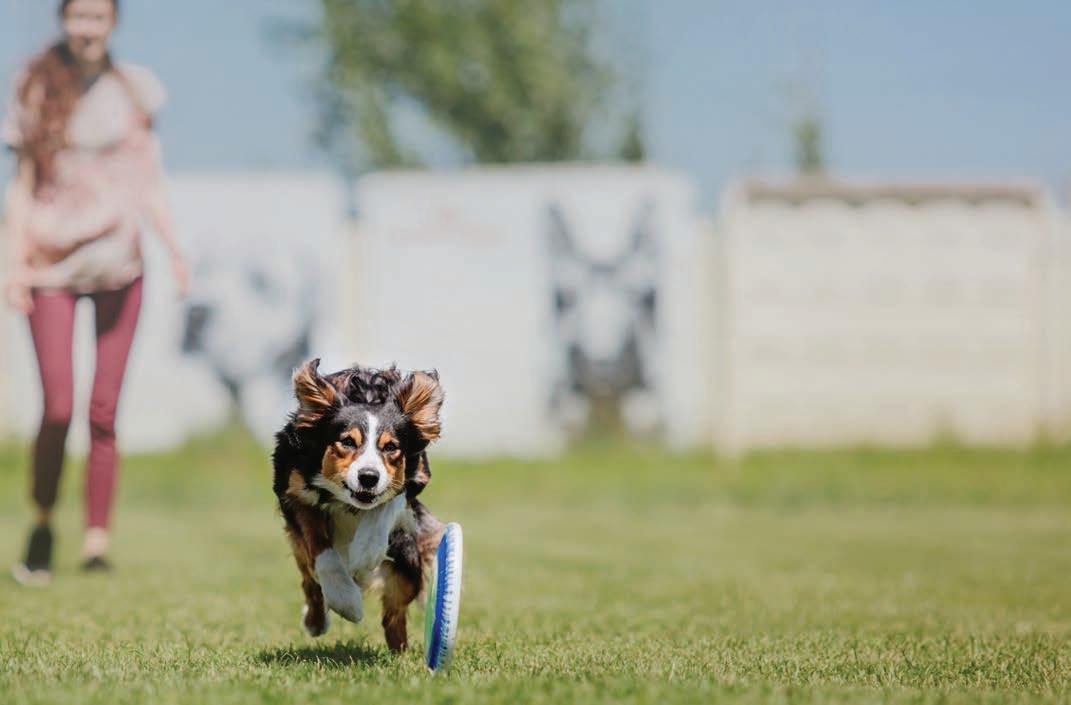
SEP 28/29, 2024 MB FLYBALL
C.O.K.C. High Flyers
Souris Glenwood Memorial Complex jackie_r_s@hotmail.com
SEP 28/29, 2024 AB
SDDA Nosework Trial
Canadian Energy Museum 50339 Highway 60 S, Devon, AB www.sdda.ca njmckenzie@glenshielregd.com
To see the events calendar or to submit your own event visit pawquarterly.com /events.





